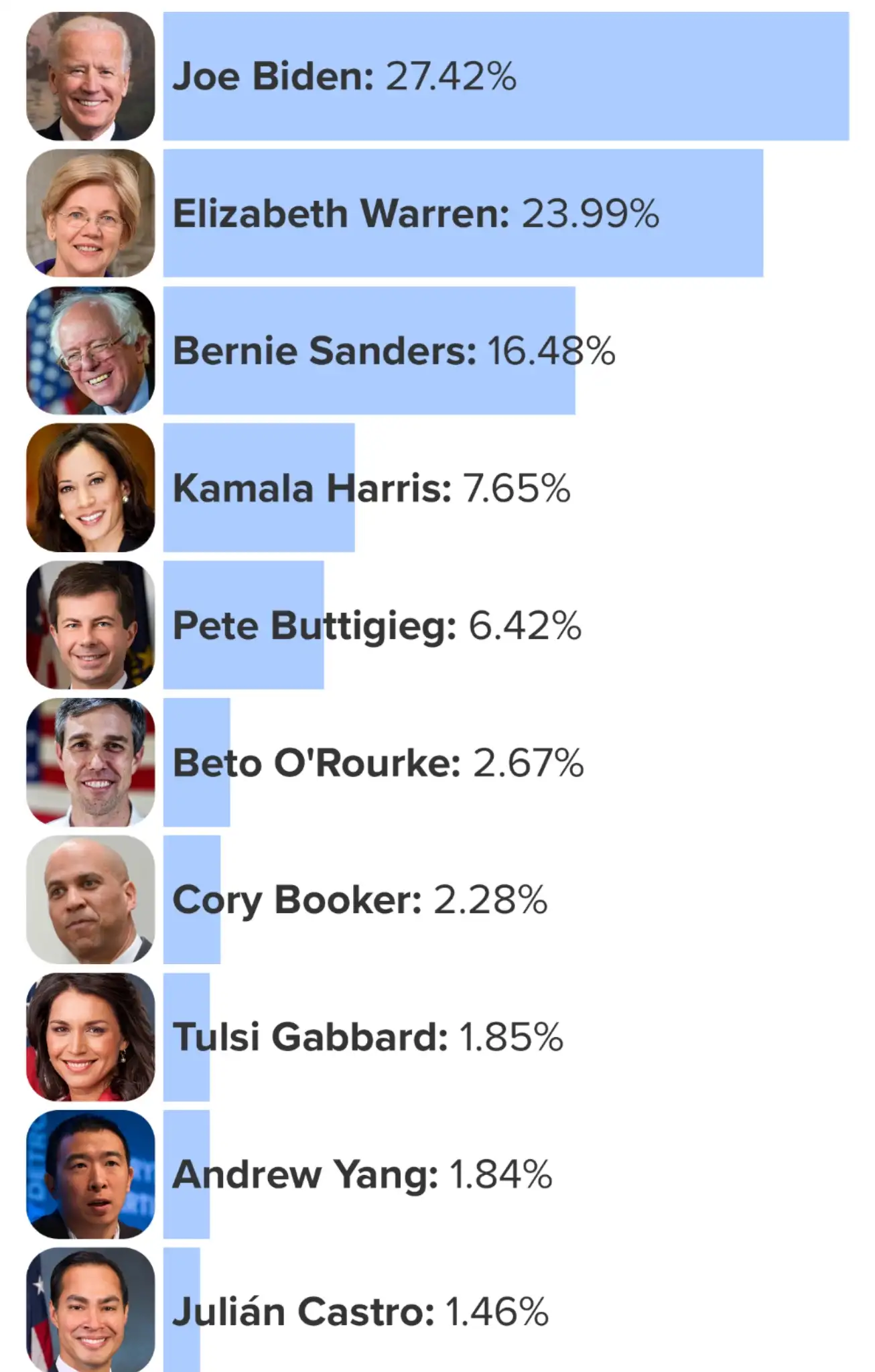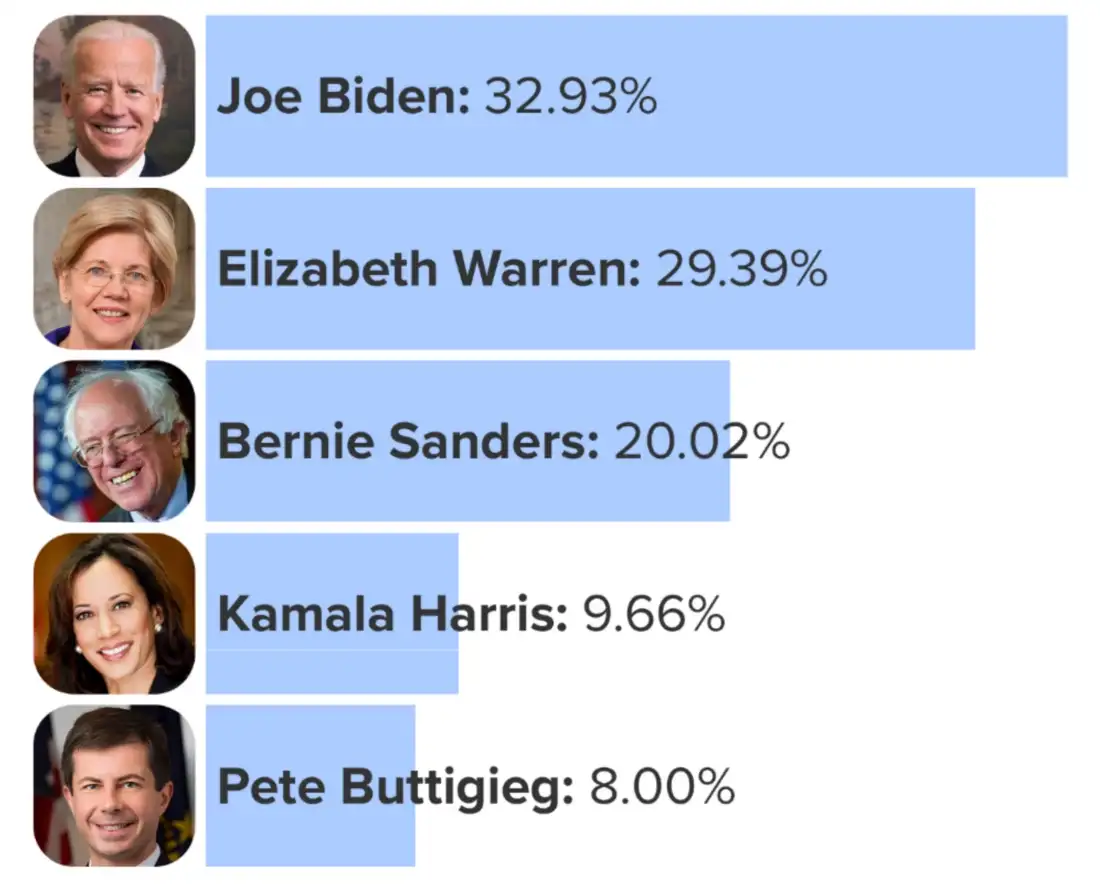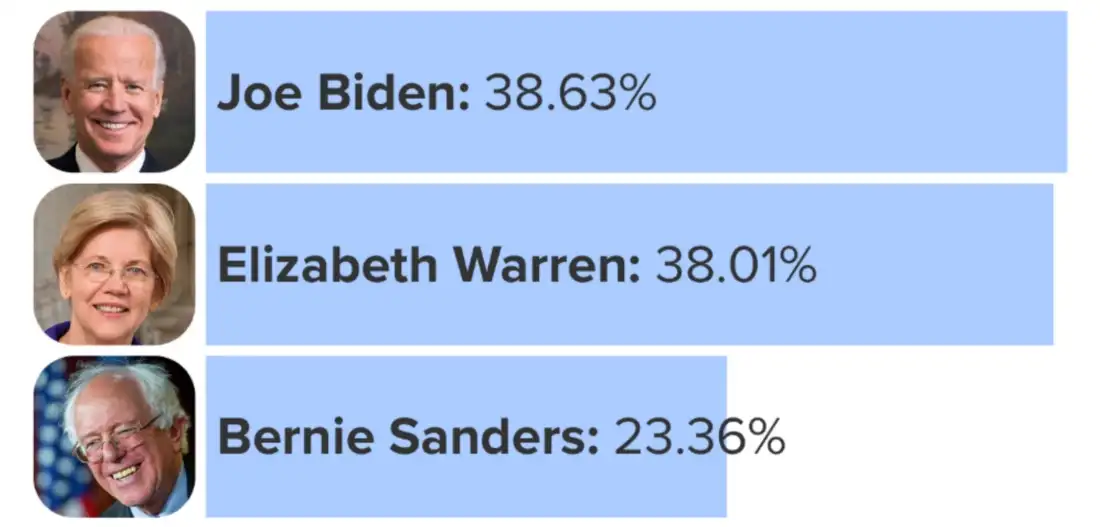Ranked choice shows what Democrats want in 2020
With the usual caveat that this is just one poll of only 1000 likely voters, the FairVote’s ranked choice Democratic primary poll is very informative.
First, even when you look at the top choices on the 20-candidate ballots, the breakdown is different from what we typically see in non-ranked polls.
Most recent poll listed on 538 shows a familiar ranking of the top five candidates:

In FairVote ranked poll, we start from a very different breakdown:

This reflects the difference in how people vote when they don’t have to vote tactically. When people know that putting their most preferred candidate at the top of their ballot won’t hurt their second choice and won’t benefit their least liked option, they stop taking early polls into account.
Naturally, this hurts the front-runner and benefits everybody else. The current front-runner Biden losing 8 points is very much expected. What’s more interesting is the dramatic difference in how this affects runners-up: Warren gains 9 points while Sanders moves by less than the error margin.
If you think this predicts where the votes will go for the top candidates later in the race, you’re not wrong.
Ranked choice for top five candidates:

Warren gains the most, Biden gains the least. Sanders also gains a lot, but most of his gain comes from the supporters of Gabbard and Yang, and this is where he hits that ceiling Nate Silver has predicted:

In this round of elimination, Sanders (+3%) gains even less than Biden (+6%), while Warren (+9%) keeps gaining the most votes through every round and goes on to win pairwise competitions against both Biden and Sanders with comfortable margins: +6% and +24% respectively.


I think this very clearly demonstrates how, given better control over their ballots, Democrats are very likely to nominate a candidate that hits the optimal balance between being the most qualified and the least divisive.
But that is not all we learned from this experiment. I have already noted the unexpected affinity of Yang voters with Gabbard and Sanders. Between Yang’s voter demographics and the Joe Rogan litmus test, I suspect that this affinity is driven by their appeal to young white men.
Even more surprising is how the Sanders voters are split between Biden and Warren when you eliminate Sanders from the top three. If you rank them by how progressive they are, Sanders is considered the most progressive option in the entire field and Biden the most moderate. With Warren in the middle, you’d expect most of allegedly progressive Sanders voters to prefer Warren. But no, 40% of his voters go to Biden.
I saw the same dynamic—an unexpectedly high fraction of Sanders voters defecting to Biden—in the polls before and after the first round of Democratic debates. I think it is safe to conclude that this part of Bernie’s base is more sexist than it is progressive. The good news is that no more than 40% of them are like that.
Predictions
- Warren is the strongest candidate in the field, with the best balance of progressive agenda, party unity, and electability.
- Ranked choice ballots yield better results in just one round of voting than a long, expensive, and divisive nomination campaign with multiple rounds of elimination.
- As Warren’s electability becomes more evident, we will see increasingly divisive attacks against her from some Sanders, Gabbard, and possibly Yang supporters.